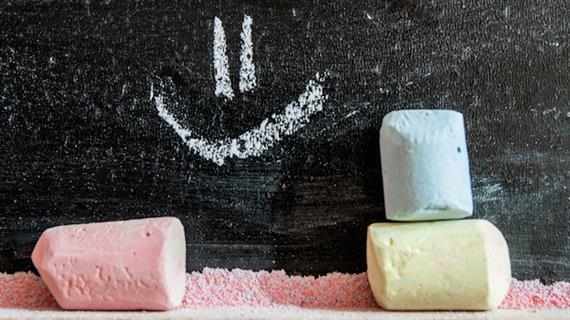Flashback to elementary school. Sitting cross-legged on my bed, shaking the contents of my piggy bank out until every coin had rolled out. And then came the piles—piles of quarters to make dollars, piles of nickels and dimes to make 25 cents, piles of 25 cents to make even more dollars … it was one of my favorite activities to do when I was bored.
Fast forward to February 2022. Standing in front of my fifth grade class. The question we had been tackling in math class was a fraction word problem about money. I asked, “So, in order to figure this out, let’s remind ourselves, how many cents are in a dollar?” I regret to say it, but less than half of my 25 students raised their hands to tell me the answer.
“C’mon, how many cents are in a dollar?”
Blank stares.
That’s when reality hit me. Money—good old fashioned money—has changed dramatically. Need to buy an item? Gone are the days of entering the store, hearing the price, and checking your wallet to see if you have the dollar and cent amount. Didn’t have the exact amount? No problem, you’d hand a bigger bill to the cashier and get change. Today? We click an app, visit a website, and charge it right to a debit or credit card or take it straight from a bank account. No need to see the money, count it, receive the change, or count out coins! In fact, a lot of the time, you don’t even SEE the money.
At this rate, why would anyone even need to KNOW that there are 100 cents in a dollar?! Does it even matter that kids don’t know their coins? Short answer: yes.
Why knowing your coins still matters
Coins are still part of our currency and in use. While they may not be used as often, children still must have a basic understanding of combinations to make a dollar. Even though payments can be made with a card or even by tapping your phone, what happens when items are on sale? How can we figure out the new sales price if we don’t have the foundational skills to work with and manipulate money? That starts with understanding on a basic level: the different coins in our currency, their value, and how they can be used to make larger dollar amounts. Not to mention the broader mathematical skills that are being reinforced when learning about coins: skip counting, adding combinations, subtractions through change, decimal values, etc.
How to shore up that coin knowledge
As teachers, we know that any new topic needs to be scaffolded. We can’t teach older children about balancing budgets and buying stocks if basic money skills are lacking. Here are some ideas to try if you’re asking questions about coins and hearing crickets:
- Challenge your kids to find spare change around the house. Have each student sort their coins and keep track of how many they have of each kind. At the end, have them find the value of each type they found. You can use this recording sheet for the activity.
- Set up a store with various items. Label each item with a price tag and give your students an assortment of money manipulatives. Have them “shop” and pay for the items. Get the printable instructions.
- Give kids a paper ice cream cone with a value written on it. Have them add “ice cream scoops” with prewritten values. The value of the scoops and cones must match. Don’t add too many scoops! Try the activity.
- Put prices on plastic cups and ask students to fill each cup with the proper change. They’ll learn how to write in dollar/cents notation and produce the proper coins for that value. Download the activity.
- Quarters can be tough to count. Skip counting by 25 is not as easy as 5 and 10. Use this chart to record and practice the pattern.
Yes, the world is changing. But let’s make sure our children know the value of their money, the importance of financial responsibility, and the real-world application they need to be successful, independent adults.


